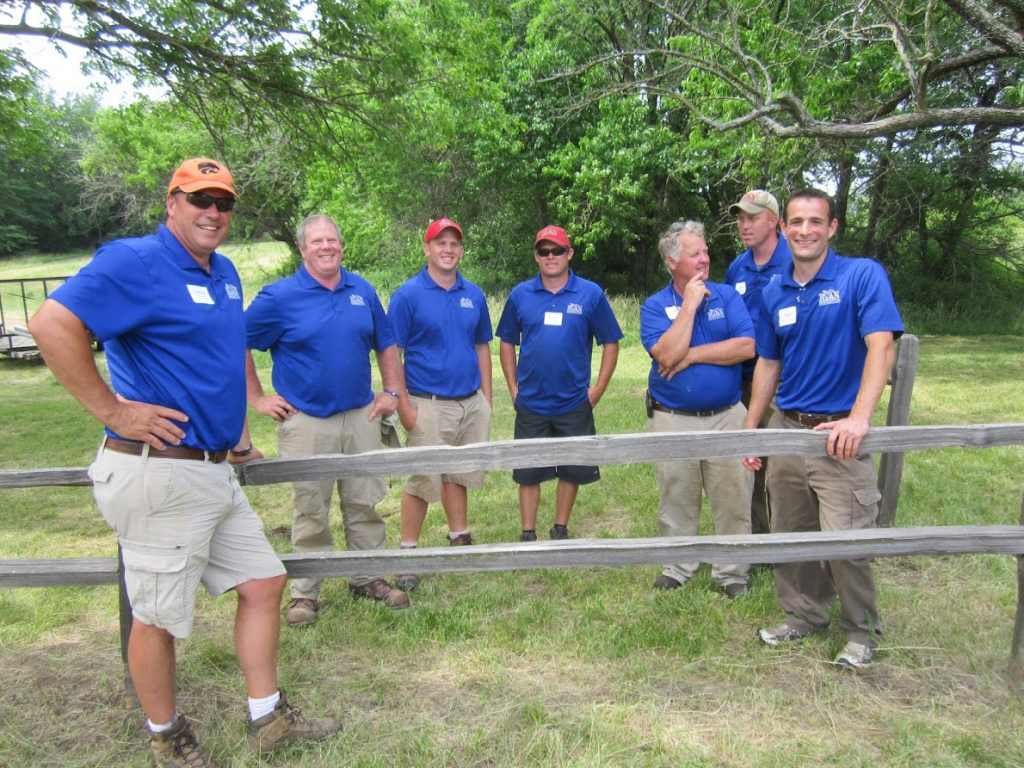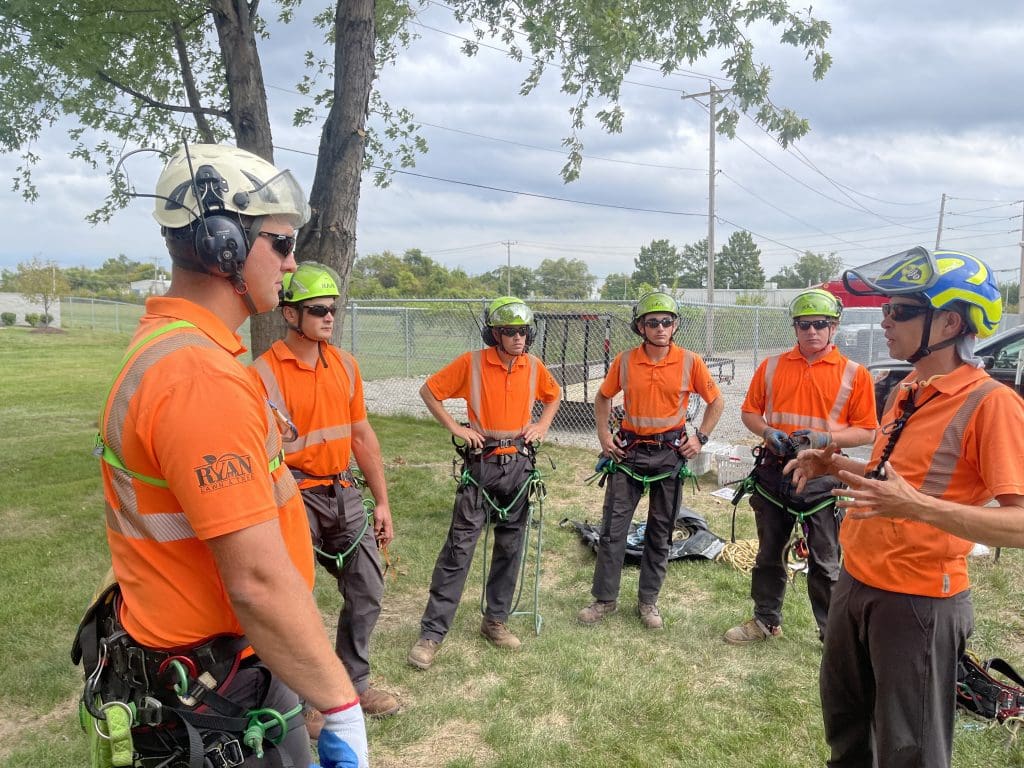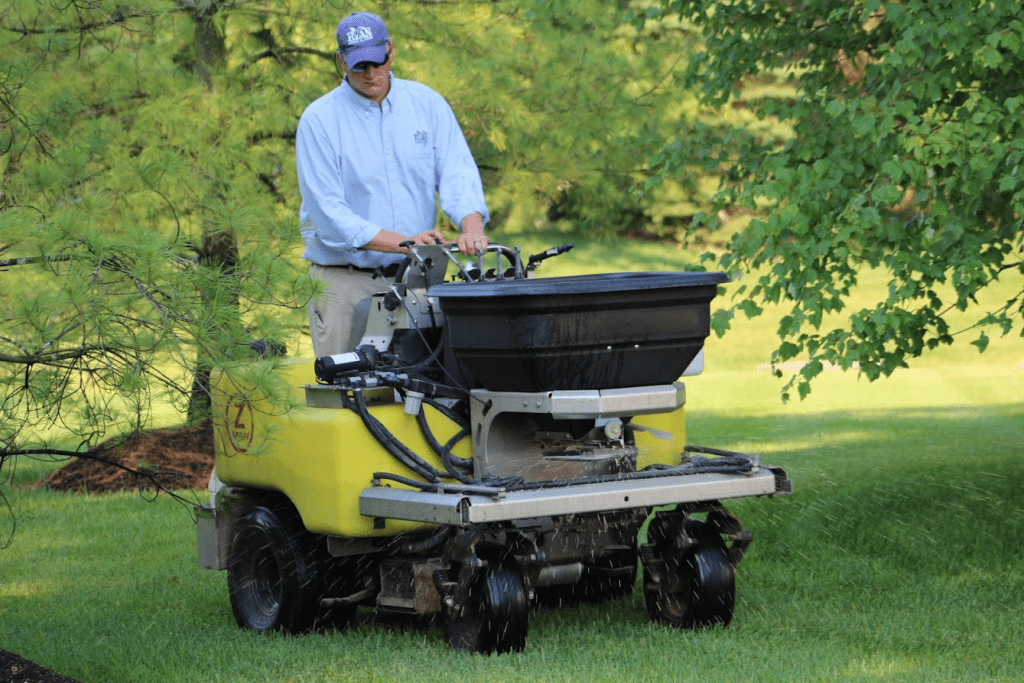
Employee Stock Ownership Plans, better known as ESOPs, have been around since the 1950s as a way to transition the ownership of a business to its employees.
An ESOP gives workers ownership interest in the company in the form of shares of stock. When these employees leave or retire, they are paid for the cash value of their shares. As the value of the company grows, so do their shares.
As of 2022 data, there are roughly 6,500 ESOPs in the U.S. This is about 1/10th of 1 percent of all businesses with employees. Despite the low number of companies taking advantage of this business succession tool, ESOPs offer a number of benefits.
Benefits of an ESOP
One of the main reasons to consider becoming an ESOP is to give back to your employees. This is why Ryan Lawn & Tree, based in Merriam, Kansas, became an ESOP in 1998.

“Who really grows a company?” says Larry Ryan, founder/president of Ryan Lawn & Tree. “The founder? Or those who work the business every day? Simple answer. It is the employees. Don’t they deserve more? That is the statement/question we asked ourselves. Our attorney told us about the ESOP concept and we said yes. We gave the first 20 percent to our staff. Sold the next 40 percent to them at 1/3rd its value. Sold the last 40 percent at 80 percent its value.”
The Davey Tree Expert Company became an ESOP in 1979 when the Davey family originally announced plans to sell the company and their employees made a bid to buy the company. Approximately 80 percent of the company is owned by a mix of active employees, beneficial owners and former employees. The other 20 percent is comprised of 401KSOP contributions.
“Providing active employees with a means to have an ownership stake in the company they work for builds an incredibly strong culture of camaraderie,” says Chris Bast, vice president and treasurer at The Davey Tree Expert Company, based in Kent, Ohio. “Employees are more engaged in their work and with their colleagues. And from a leadership perspective, having no outside investors allows us to continue to maintain control of our own destiny and make decisions for the future of the company with the employee-owners’ best interests in mind.”
ESOPs also serve as a qualified retirement plan that can be used in addition to a 401(k) or profit-sharing plan you may offer. Ryan says one employee, Mike, joined the company when he was 43 and when he retired at 65 last year, he received an ESOP check for $813,000.
“This is our story,” Ryan says. “Also, Mike was never a manager, so not (one of) the higher paid associates. He took $813,000 out but put so much more into our company.”
Todd Leverette, one of the co-founders of Apis & Heritage Capital Partners, based in Washington, D.C., encourages companies keep their 401(k) plan, even if they become an ESOP. Apis & Heritage Capital Partners is an investment fund that finances the conversion of companies with substantial Black and Brown workforces into 100 percent employee-owned businesses.
“For very many hourly workers who we focus our attention on, they barely have enough money to keep their heads above water and many find it extremely difficult to put anything into a 401(k), even with a match,” Leverette says. “With an ESOP, on the other hand, the employees earn their shares just by their hard work and not by paying for them, so that’s why we see the two programs as highly complementary for workers.”
Because the value of the shares is dependent on the value of the company, this often encourages employees to be more invested in the success of the business. Ryan says that customers benefit from the ESOP as well as they see a dedicated workforce that returns each spring who truly cares about their property.

Another advantage of becoming an ESOP is the tax benefits. If a company is a C corporation, once the ESOP owns 30 percent of all the shares, the selling shareholder can defer paying capital gains taxes on the sale of the company.
John Murphy, president of Atlantic Management Company, a valuation and financial advisory firm based in Portsmouth, New Hampshire, says by deferring, the selling shareholder must invest the proceeds of the sale back into the market. The value of that money goes to their beneficiaries at the current value upon their death.
For S corporations, the percentage of ownership held by the ESOP is not subject to federal income tax and in 44 out of 50 states they pay no state income tax as well. So in the case of 100 percent employee ownership, no federal income taxes are paid and those that are a lesser percentage are prorated accordingly.
“It’s a huge benefit because all the money that has essentially has leaked out of the company year over year to pay taxes is really now available to just pay down the debt associated with the purchase,” Murphy says.
Factors to Weigh
As mentioned earlier, ESOPs can serve as a viable exit strategy, depending on your goals as an owner. If you are looking to sell your company and get 100 percent cash and walk away, an ESOP is not the route for you.
“An ESOP doesn’t make a bad company good, but it can make a good company better,” Murphy says. “An ESOP is not for everybody.”
Because you are selling your company to your employees, you have to be willing to shift from being the boss to being a partner. Ryan says they had to become a more sophisticated company and have a commitment to growth.

“You don’t want to own stock in a company that is not growing because the value does not grow if there is no growth,” Ryan says. “We have committed to our future of making a difference in our industry.”
As for what type of company is best suited for an ESOP, Leverette and Murphy say it needs to be a profitable business that is not highly leveraged. Murphy adds it’s ideal for the company to have an open-book management style.
“By having an open-book management style and sharing information to the employees, they’re going to understand this better,” Murphy says.
Murphy suggests an ESOP should have at least 20 employees due to some government testing provisions to prevent abuse of the program’s tax benefits. Leverette adds they prefer a company to have a minimum of 40 employees and at least $1 million in EBITDA, but this is not a requirement.
“In terms of size, the smallest size companies that can reasonably do an ESOP is a company with a value of a million dollars,” Murphy says. “The reason for that is the cost to implement an ESOP and to maintain it annually is really the same whether you’re a million-dollar valued company or a $5 to $10 million company. If you go up higher, yes, the costs go up. It’s really a function of just a return on investment.”
Speaking of the costs to becoming an ESOP, this is one of the main barriers that might discourage you from choosing this route. Leverette says the costs to set up an ESOP can rise to six figures.
“This is one reason we founded Apis & Heritage Capital Partners last year,” Leverette says. “We felt that many owners might like to sell their companies to their employees but the expense, red tape and delays put them off. We formed A&H to make it easy for an owner to sell and to achieve near 100 percent value for the business on day one, as opposed to a self-financed ESOP transition that can often take years to be fully implemented.”
Becoming an ESOP
If becoming an ESOP still sounds like the right fit for you, the basic process starts with getting the preliminary value of the company. If the valuation lines up with how much you thought your business was worth, then a feasibility study is conducted.
“The feasibility study is really a fancy term for transaction analysis,” Murphy says. “It’s really based upon the goals as discussed by the management team or the selling shareholders. What are they ultimately trying to accomplish for both themselves as well as for the company?”
Murphy says the feasibility study can be a very simplistic or complex process depending on the goals of the selling shareholders. Some of the questions include:
- Do you want to sell 100 percent to the ESOP or a minority amount like 20 to 30 percent?
- Do you want to use bank financing and receive some cash at closing or do you want to use seller financing and take a promissory note or a combination of the two?
- Do you want to take care of some key people above and beyond the impact of the ESOP through stock appreciation rights?
- How much debt can the company afford to take on?
- How long should the company plan to pay this back?
Once there is an agreement on the transaction structure, an ESOP trustee who will represent the interests of the workers is brought in.
A company becoming 100 percent employee-owned can happen as fast or as slow as the selling owner and the employees want. Often when an owner is managing the transaction themselves, it will take 7 to 10 years to become 100 percent employee owned. Generally, banks will lend up to 30 percent of the value of the company at a time.
“In our experience, this process is a significant disincentive for many founder/owners who would like to sell their business to the folks who helped them build it,” Leverette says. “For someone who has founded a business and been with it for 20 to 30 years, deciding to retire and sell will be one of the hardest decisions they ever make. To now tell that person, congratulations on deciding to retire, but the ESOP needs you to stick around for another 10 years; that is not an encouraging proposition.”
Working with third-party firms can allow companies to become 100 percent employee-owned businesses upon close. Murphy says most ESOP transactions nowadays are becoming 100 percent employee-owned from the start so they can reap the maximum tax benefits.

Aside from the startup costs, ESOPs require an annual valuation and then a third-party administrator who allocates that value to all of the active employees. The ESOP trustee must also be compensated.
“It’s a little bit geographically based but I would say that the annual cost, you’re looking at $30,000 to $40,000 a year to maintain the ESOP,” Murphy says.
Leverette adds the HR department must become familiar with how workers earn shares and cash them out. The company’s financial division will manage corporate liquidity so when workers retire there is money in the account to buy back their shares.
Advice from Other ESOPs
One of the major keys to being a successful ESOP is ensuring your employees understand how the program benefits them. With more than 11,000 employees, Davey Tree has created a shareholder relations initiative designed to educate their employees on what employee ownership means, how it works, and what benefits it provides to them and the company as a whole.
Ryan says they talk about the responsibilities of ownership a lot with their employees.
“I think it can be like giving your kids a car that they tear up,” Ryan says. “They must feel they are earning it. If not, they will not act any more responsible than if they were your kid you gave that car to.”
Leverette backs this up as he says research shows the benefits of higher productivity, higher profitability, faster growth and lower turnover only occur in ESOP companies where the employees have internalized the fact they are owners and are engaged as owners. Murphy adds an ESOP is not an event, it’s a process.
“It’s a process of communication,” Murphy says. “You want the employees to understand that what they’re doing out in the field is impacting their shares in the company.”

Ryan advises asking why you would consider converting and if you have someone to take your place as president. He also say you need to decide if you are committed to annual growth in your company. To get your employees excited about the stock, they need to see their value grow every year.
“One of our managers in our pruning department summed up the experience well when he said, ‘For years the COO told me I’d someday be a millionaire,’” Ryan says. “‘I saw my value go from $1,500, to $3,200, to $5,500, to $8,900, to $12,000, then $16,000. Even at this point, a million seemed impossible. Soon though since it is exponential growth, I was at $90,000, then $115,000 and a few years later was over $200,000. Now I am knocking on the door of $1 million at the 20-year mark. It seems unreal.’”
Another aspect he says you have to come to terms with is will your ego let you have partners. Ryan says when the company became 100 percent employee-owned, he realized he no longer controlled the company and he could be fired if the employees didn’t think he was doing a good job. Eventually he came to a point he would rather see his people be successful more than anything. Ryan admits it was not a natural progression of thought.
“Talk with business leaders with experience in ESOPs to learn what has made them successful and what challenges they faced,” Bast says. “Ask them, too, what worked well that they would do again and what did not work well that they would avoid. Davey has been employee-owned for 43 years, and many of the folks who were involved in the employee acquisition at Davey have passed, so we sadly can no longer ask them those kinds of questions. But there is one opinion many retired and former Davey employees share, and that is that becoming an employee-owner is one of the best decisions they made.”
This article was published in the Nov/Dec issue of the magazine. To read more stories from The Edge magazine, click here to subscribe to the digital edition.

